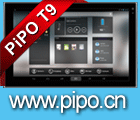Interview with founders of QuirkLogic, Nashir Samanani and Mike Mabey. Their product, the Quilla is a Real Time Ideation solution which is aimed at replacing traditional ways of brainstorming and capturing ideas. During the interview they explained that the Quilla is shipping in volume, the types of markets include Technology, Healthcare, Design, Architecture & Construction, Hospitality etc. Quilla features a 42” ePaper display, its so low power that they can run it on battery for 16 hours and the whole thing weighs only 24 lbs making it quite portable. Here showing how it looks in direct sunlight, with no glare, the writing experience feels like paper and pen but it has full digital capabilities including file sharing, pen and touch inputs, image modifications with two finger pinch and zoom, unlimited pages, walk up and use features. Their target is for every conference room, sports locker room, nurses’ station in a hospital, construction sites that modify blue prints constantly etc can benefit from this technology. The QuirkLogic team of Zemina, Mac and Matt also demo their Ideation solution, the Quilla, in this video they show the collaboration features in real time, the ability for remote teams to work together and brainstorm, work on projects and design things and ideas collaboratively in settings that can be more inspirational without the need to be indoor.
Category: Exclusive videos
Nubia Z17S flagship, Z17 miniS, N Series, V Series
Nubia’s flagship phone is their Z17S with a 5.73″ FHD+ screen 2040*1080 Pixel display (403ppi), 4G LTE Qualcomm Snapdragon 835, 6GB RAM, 64GB Flash, Four Cameras, Android 7.1, NFC, Type-C 26W fast Charge. Nubia also does smart locks, IoT, smart lamps and more. The N Series and V Series are going to be price attractively yet provide a 18:9 display. As concepts for future phones they are showing one with a built-in fan for gamers to cool their phone when cranking up the peak performance output and designs for gamers that includes kevlar. Noise canceling headphones, power banks, 360 degree Type-C camera and more.
Qualcomm Snapdragon 845
Qualcomm Snapdragon 845 is Qualcomm’s fastest consumer ARM Processor yet (30-40% faster than last year’s Snapdragon 835 using 30% less power), on 10nm FinFET LPP Samsung process, it features 64bit Octa-core quad 2.8 GHz Kryo 385 Gold which are ARM Cortex-A75 custom cores and quad 1.8 GHz Kryo 385 Silver which are ARM Cortex-A55 custom cores, Qualcomm’s fastest ever GPU the Adreno 630 with its Visual Processing Subsystem (including GPU, VPU and DPU) with OpenGL ES 3.2, OpenCL 2.0, Vulkan2, DxNext eXtended Reality (XR), Room-Scale 6DoF with simultaneous localization and mapping (SLAM), Adreno Foveation, Advanced visual inertial odometry (VIO), HDR10 and Hybrid Log-Gamma (HLG), 4K Ultra HD @ 60 FPS, 2x 2400×2400 @ 120 FPS (VR), 10-bit color depth (encoding and decoding). Qualcomm’s AI Platform is on their 3rd Generation Qualcomm Hexagon 685 DSP which supports sophisticated, on-device AI processing, delivering richer camera, voice, XR and gaming experiences as a Neural Processing Engine (NPE) with Caffe, Caffe2 and TensorFlow support. With DisplayPort and USB Type-C support. Qualcomm’s X20 Modem supports 1.2Gbit/s download speed using 5×20 MHz carrier aggregation, up to 256-QAM, up to 4×4 MIMO on three carriers, up to 150mbit/s upload speed using 2×20 MHz carrier aggregation, up to 64-QAM. Multi-gigabit Wi-Fi 802.11ad and integrated 2×2 802.11ac. Qualcomm Secure Processing Unit (SPU) where Biometrics can be used for authentication can be stored in isolation in hardware.
Epson EB-710Ui, Laser interactive projector
This is Epson’s best ultra short throw interactive FHD projector, generating up to a 100″ laser display at Full HD WUXGA resolution with Epson’s 0.67 inch with MLA (D10) 3LCD technology at 4000lumen, 2,500,000:1 Contrast Ratio, 20,000 Hours Durability.
Paul Gray, IHS Markit Analyst, talks 4K, 8K TVs, OLED, Quantum Dots, MicroLED, Dynamic HDR
Paul Gray is a Principal Analyst/Researcher within the IHS Technology group since November 2014, when IHS acquired DisplaySearch, a leader in primary research and forecasting on the global display market. At DisplaySearch, he served as director of European research. In addition to TVs, he also covered wearable devices, digital broadcast and semiconductor technology. He conducted in-depth analysis and forecasting of wearable devices, connected TV and 4K Ultra HD. Mr. Gray has more than 20 years of experience in market intelligence, marketing and product management. His work includes forecasting, product strategy, investment and R&D decisions. He has also been involved in consulting and conferences, and he has been cited as an expert in Nikkei, Los Angeles Times, Le Monde, Financial Times, The Korea Herald and other publications.
PTScientists 2019 Mission to the Moon LTE and 2 rovers
Berlin-based new-space company PTScientists is taking you on a Mission to the Moon Working with key technology partners Audi and Vodafone, they aim to drive a pair of Audi lunar quattro rovers on the surface of the Moon, and re-visit the last place that humans set foot on the lunar surface during the Apollo 17 mission 45 years ago. After doing a 384,000 km trip from Earth to the Moon, their ALINA spacecraft will attempt to land safely on the lunar surface to deliver their two Audi Lunar quattro rovers and a range of scientific payloads. Once safely on the Moon, their pair of Audi Lunar quattro rovers will use their four-wheel drive capability to explore the harsh lunar environment to attempt to Drive 500m on the Moon also to test a new lunar communications architecture, with a Vodafone-provided LTE base-station allowing the rovers to transfer data to ALINA. They will attempt to send HD images to the Earth 48 years after the final human footprints were left on the Moon, they will return to the Apollo 17 landing site to capture the first high-resolution images of the original Lunar Roving Vehicle (while taking great care not to disturb the site).
ARM Machine Learning (ML) Processor
The Arm Machine Learning processor provides up to 4.6 Trillions of Machine Learning Operations Per Second, as part of the Project Trillium, Arm’s Machine Learning (ML) platform, enables a new era of advanced, ultra-efficient inference at the edge with Programmable layer engines for future-proofing, Highly tuned for advanced geometry implementations, Specifically designed for ML and neural network (NN) capabilities, the architecture is versatile enough to scale to any device, from IoT to connected cars and servers.
Built from the ground up for optimal performance and efficiency, Project Trillium completes the Arm Heterogenous ML compute platform with the Arm ML processor, the second-generation Arm Object Detection (OD) processor and open-source Arm NN software.
The Arm Machine Learning processor consists of state-of-the-art optimized fixed-function engines that provide best-in-class performance within a constrained power envelope. Additional programmable layer engines support the execution of non-convolution layers, and the implementation of selected primitives and operators, along with future innovation and algorithm generation. The network control unit manages the overall execution and traversal of the network and the DMA moves data in and out of the main memory. Onboard memory allows central storage for weights and feature maps, thus reducing traffic to the external memory and therefore, power.
Sony XZ2 with 4K HDR recording
Sony launches their XZ2 and XZ2 Compact Smartphone (https://www.sonymobile.com/global-en/products/phones/xperia-xz2/) based on the Qualcomm Snapdragon 845 with 4K HDR video recording support. Featuring a 5.7″ Full HD+ (2160×1080) HDR display (5″ on XZ2 Compact), Dynamic Vibration System with powerful stereo speakers, Full HD 960fps slow motion, 19MP Motion Eye camera with memory-stacked image sensor. 4GB RAM, 64GB UFS internal memory.
MediaTek helio P60, octa-core ARM Cortex-A73 and ARM Cortex-A53 with Mali-G72
MediaTek helio P60 is MediaTek’s most powerful chipset yet, built on TSMC’s 12nm FinFET production process, with MediaTek’s CorePilot 4.0, featuring four ARM Cortex-A73 cores at 2.0GHz, four ARM Cortex-A53 cores at 2.0GHz in a big.LITTLE configuration, ARM Mali-G72 MP3 GPU clocked at 800MHz. They also provide a Multi-core AI processing unit (Mobile APU) with a 280GMAC/s performance for deep learning facial recognition, object and scene identification, user behavior-informed performance and other AI and AR application enhancements good for computer vision enhancements on the cameras such as Single or Dual Camera bokeh, Real-time HDR recording and viewing and more.
Vuzix AR3000 Smart Glasses starts mass manufacturing
Vuzix is about to launch the mass manufacturing, they are already shipping a few samples to developers to prepare some of the killer apps that will be available. They will be providing two skews, one more basic consumer edition and more higher spec version for the enterprise. They support Alexa, it runs Android with all kinds of Augmented Reality and Smart Headmounted Dashboard type apps that can be developed. It also has a Smartphone app that simplifies the management of the smart glass, choosing which app to load in the UI.
World’s first 5G chipset: Huawei Balong 5G01
The Huawei Balong 5G01 chip is a 64bit ARM based chipset, the first in the world, the first to support the latest 3GPP standard for 5G networks, it can transfer data at 2.3Gbps speeds the use case here is for home or enterprise broadband where the 2.3Gbit/s bandwidth comes from the 5G network and broadcasts that as a Wi-Fi signal in the home or office. Later this year or soon, Huawei and others will be reducing the size of the 5G chipset to fit inside of phones and more.
My Samsung Galaxy S9/S9+ Review at launch unboxed MWC
Samsung releases the same phone again, this year still $900, but now they re-imagined the camera. It was already a great camera last year. But now it’s better for sure. Now the “amazing” S9 camera has a mind blowing dual aperture so that is supposedly good. The 960fps slow motion is grainy and blurry but it’s the same Sony did in their XZ phone last year. Samsung Dex is great but it seems they haven’t developed any productivity apps yet, just loading whatever is there for smartphone and tablet. The poop emoji is also here the highlight the most important revolutionary feature of 2018, as a copy of Apple’s poop highlight from last year. Also it’s great you can buy your next makeup using augmented reality. Welcome to my Samsung review!



